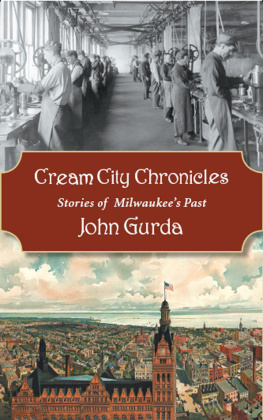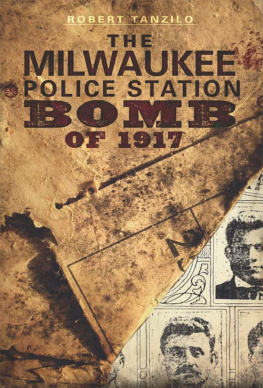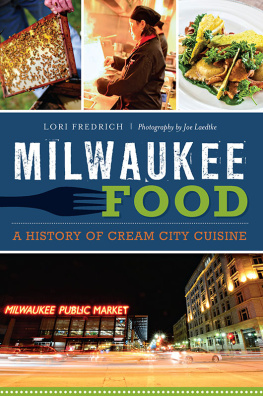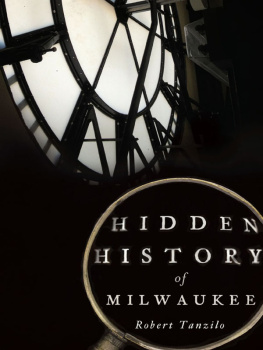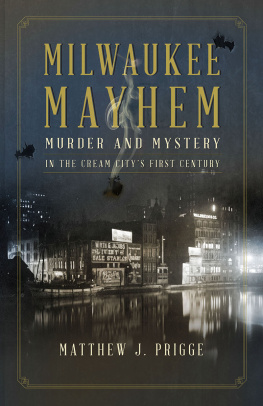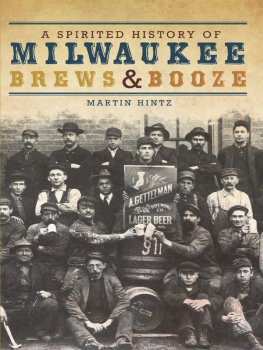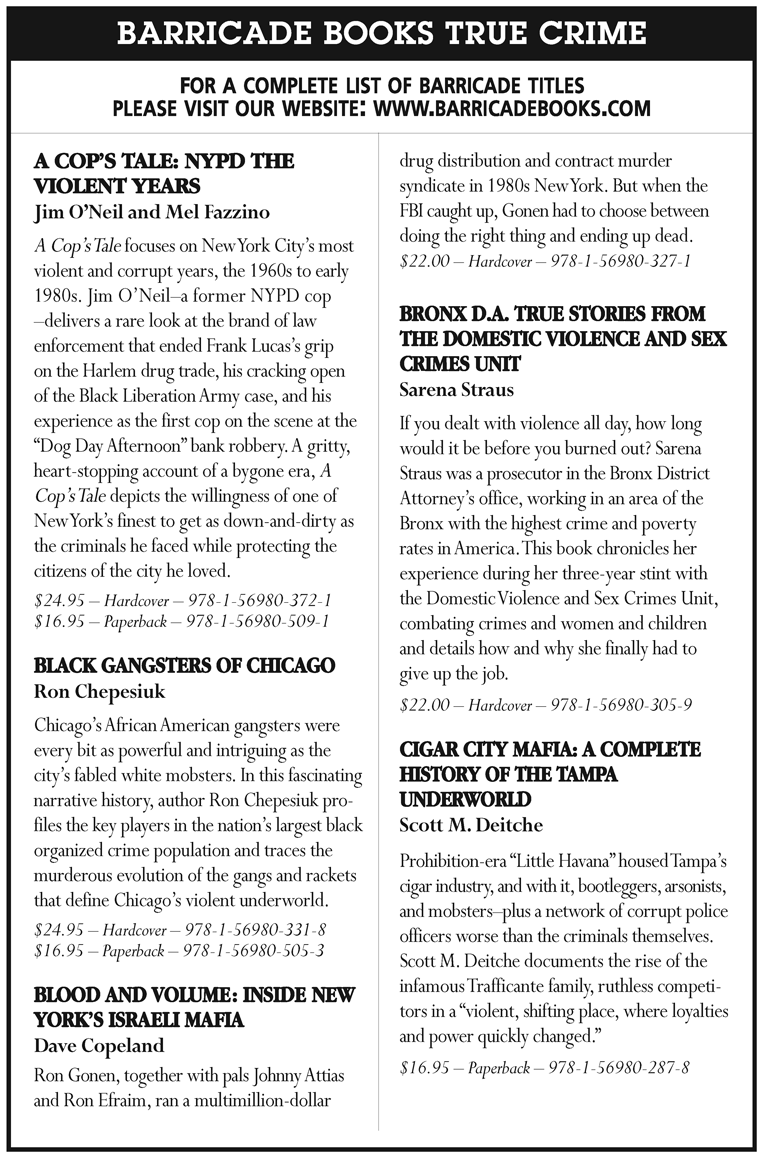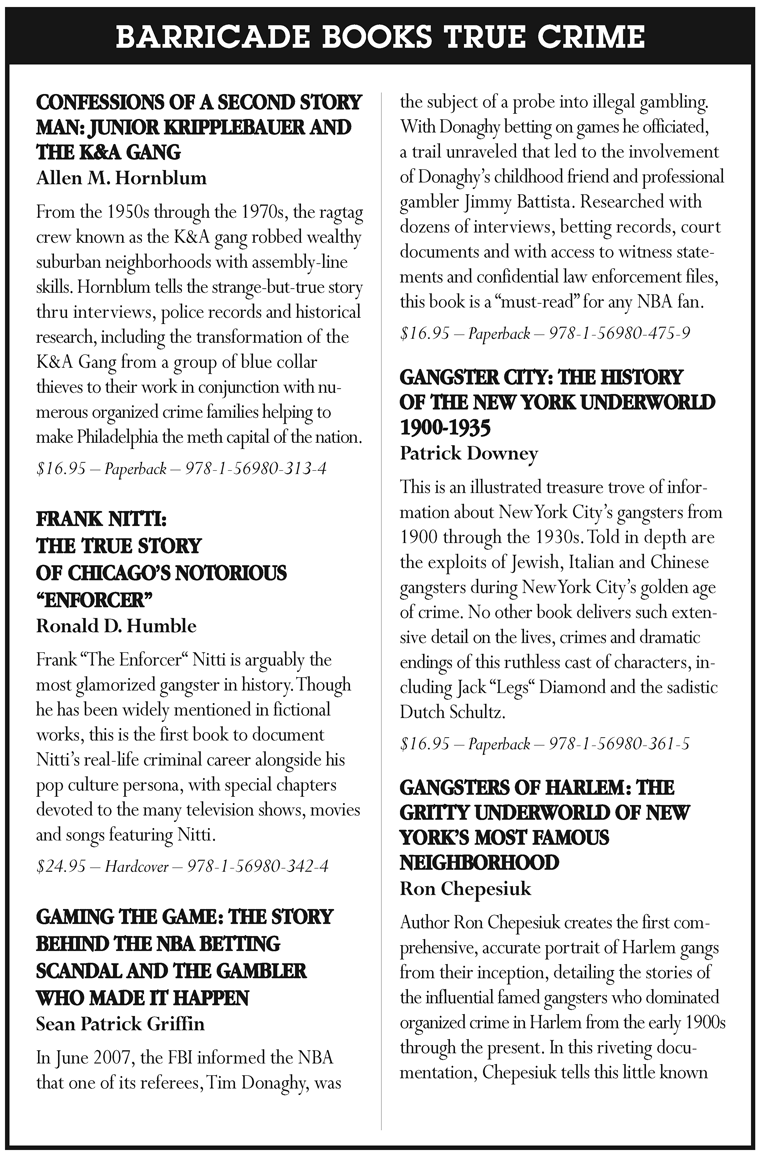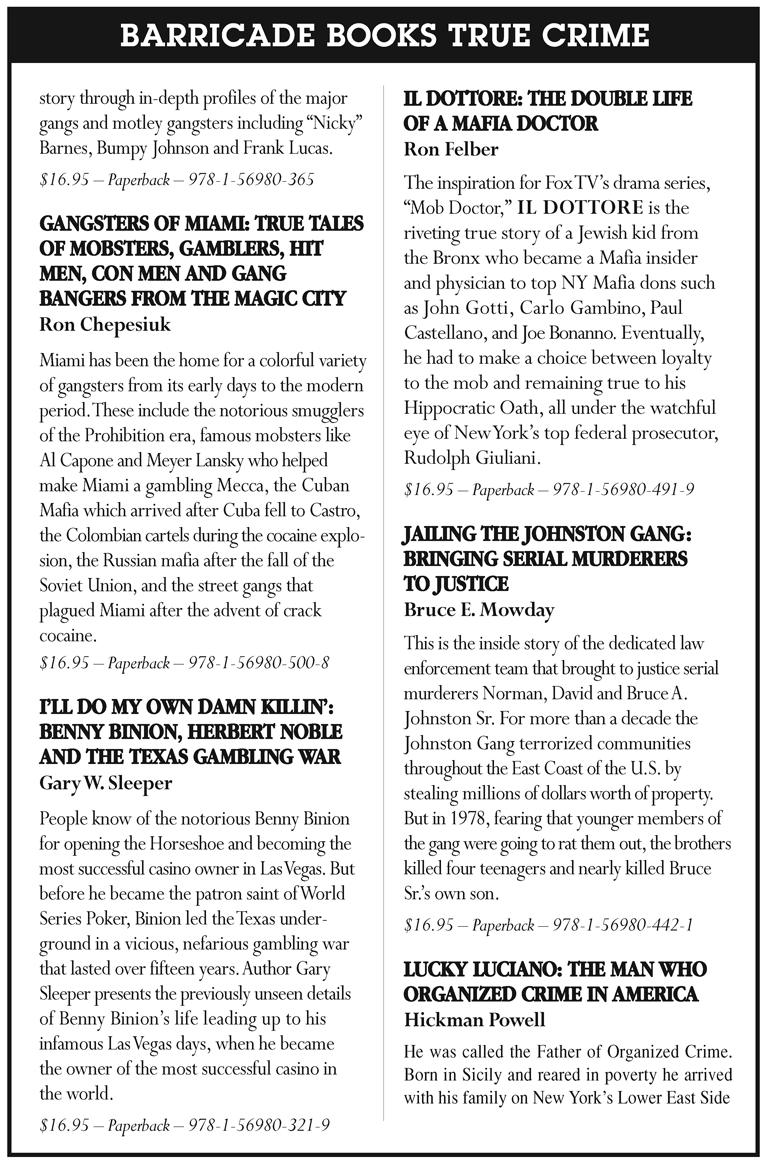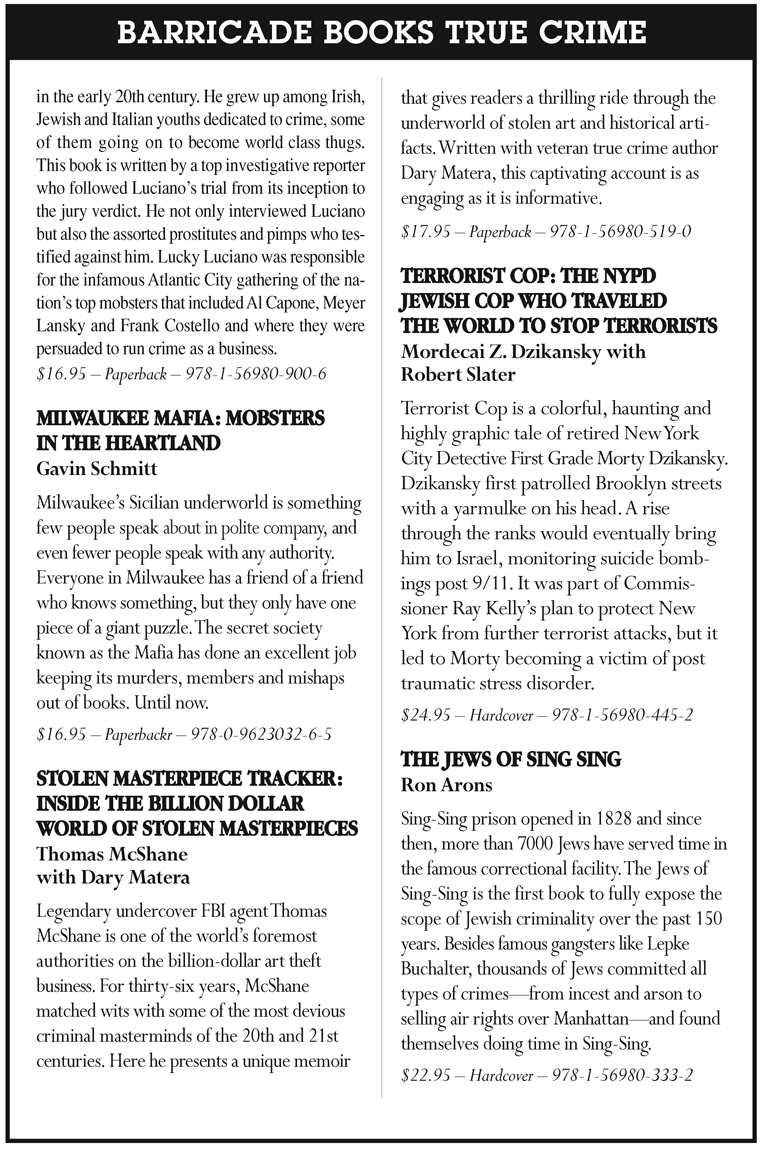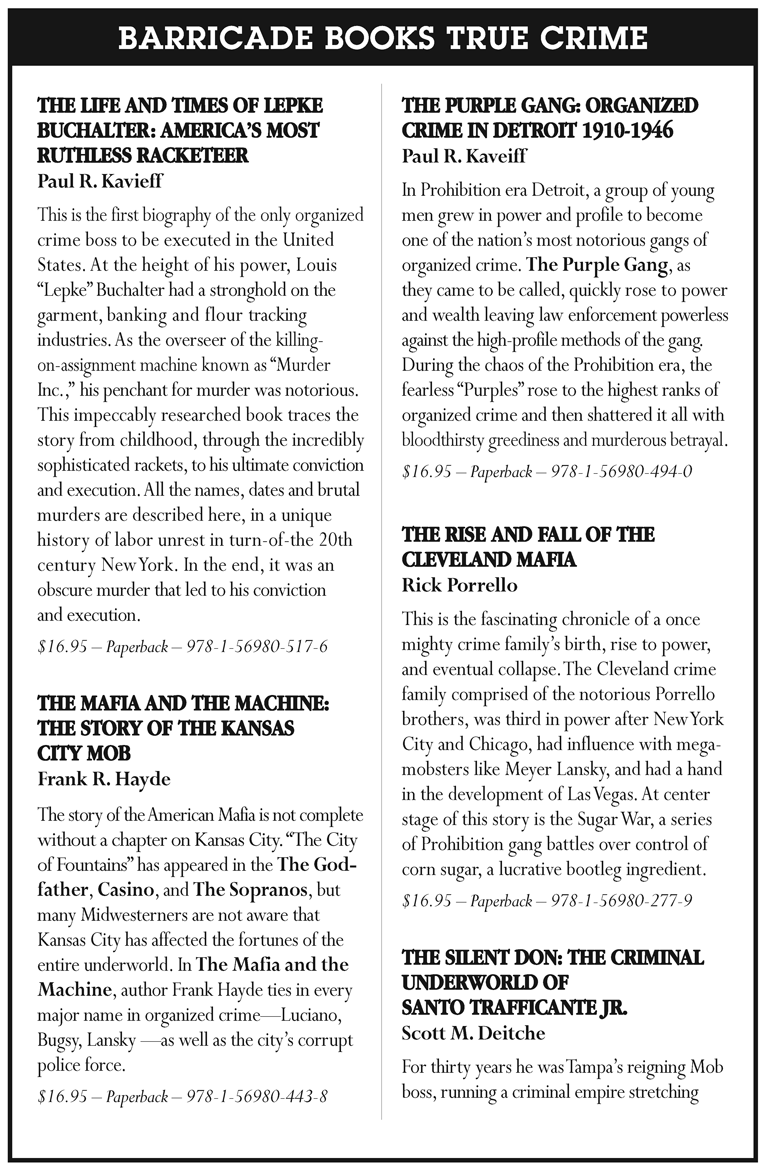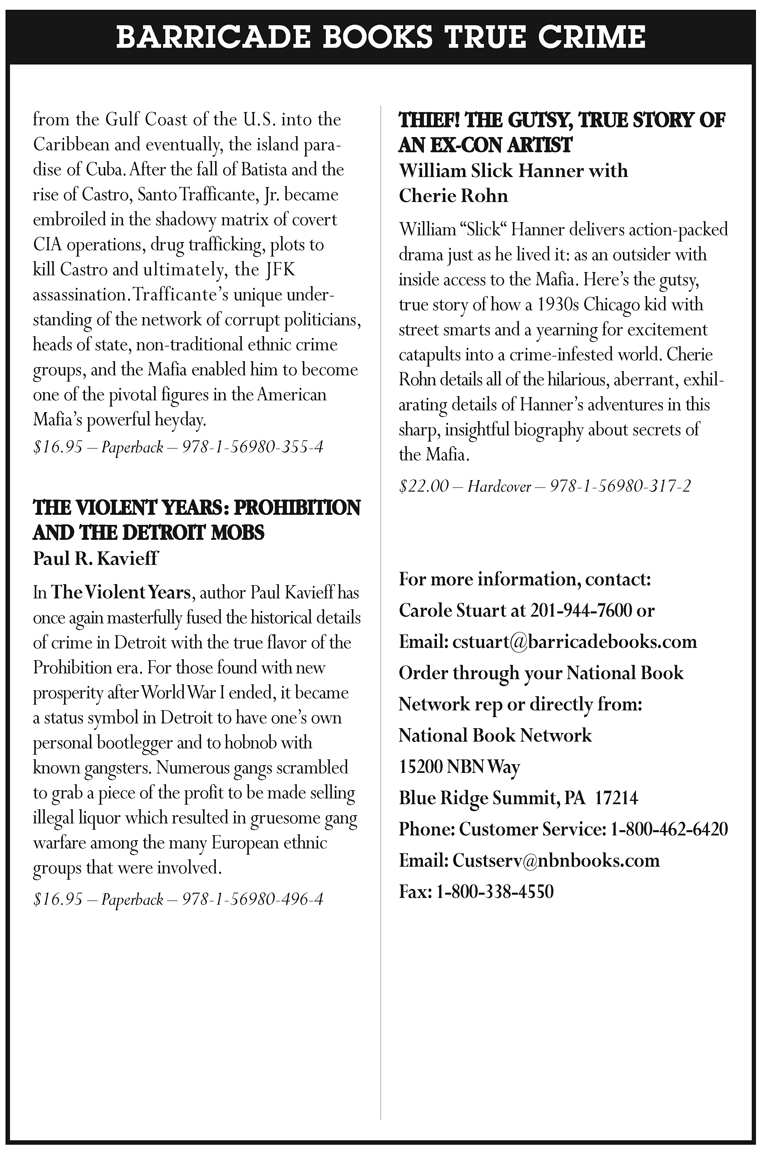Introduction
W HAT DOES THE word Mafia bring to mind? Murder, car bombs, bootlegging and other devious crimes. The back alleys of Chicago and New York. Al Capone and John Gotti. What the word rarely brings to mind is Milwaukee. This book will change that Milwaukee, though smaller, had its streets flowing with blood and illicit booze.
Dozens of people were shot, stabbed and blown apart in the streets of Milwaukee, their bodies left to rot in the ditch until discovered by an unsuspecting passerby. Milwaukee is internationally known as a beer capitol, and this hardly stopped in the 1920s just because alcohol became illegal. It was a drink many were willing to kill for.
In the pages that follow, you will be introduced to turn of the century Milwaukee, its underworld, and its first Mafia boss: Vito Guardalabene.
Guardalabene grew up in Santa Flavia, northern Sicily, in an era of unrest. His village was a crucial commercial center nothing was imported or exported without going through the hands of dock workers. The local Mafia controlled the nearby orchards that supplied the world with grapefruit. One strike and the whole region could grind to a halt.
Sailing from Sicily to Milwaukee, Guardalabene also brought his trusted crew. You will get to know them better in the pages that follow.
- Peter Bellant brought his wife Josephine Amato and three children: Angela, Anthony and Rose. The Guardalabene and Bellant families were close. Two of the Guardalabene children married into the Bellant family, and the merged families ran a small bank that provided loans for immigrants when they reached the new world.
- Sons Giovanni Battista and Angelo. The former came over in June 1900, meeting up with his brother-in-law Anthony Bellant on Chicago Street in Milwaukees Third Ward. Angelo arrived later, in July of 1902 and moved in with his brother.
- Isadore Aiello, Vitos son-in-law through daughter Antonina. Aiello emigrated in May 1902.
- Nunzio Maniaci left for Milwaukee in December 1902, and when he arrived, he married the sister of a Republican Party official with Giovanni Battista as his best man. At least three of Maniacis ten sons later joined up with the Milwaukee mob.
- The Balistrieri family, from the neighboring village of Aspra, were also part of this crew at least five of the men in this family were Mafia members in Milwaukee.
Welcome to the world of the Milwaukee Mafia. Lets turn back our calendars and let our story begin.
A Tale of Two Cities: Milwaukee
T HE WORLDS OF Sicily and America could not have been more different. Vito Guardalabenes homeland had a rich, multicultural heritage going back centuries, before the days of recorded history. America had the natives, of course, but what we now consider civilization goes back less than two hundred years in Milwaukee, or barely fifty years before the Italians arrived.
Until the 1830s, much of the current downtown area was swampland, nothing more than a boggy marsh. Dr. O. P. Wolcott visited in 1843, and reported to his friends back east that it was an ill favored and unpromising stretch of waste. Such a spot ... was intended only for waterfowls and wild beasts, not for the dwellings of man. Yet, this deterrent to construction was precisely why people chose to settle there the Milwaukee region had the largest bay and deepest river on Lake Michigans western shore, even more so than Chicago. In a time when travelers and supplies went primarily by boat, this area was ideal. Three settlements were formed by surveyor Byron Kilbourn, trader George H. Walker and speculator Solomon Juneau, respectively. To understand how small these settlements were, it is worth quoting Kilbourn; he thought of the 200 settlers who came in 1835 as a flood. By 1890, there would be 200,000 residents, far surpassing the 10,000 in Green Bay (the Midwests largest settlement at the time of Wisconsin statehood).
Milwaukee was incorporated into a city on January 31, 1846, combining the prior settlements of Juneautown, Kilbourntown and Walkers Point for a total population of 15,599. The latter, being the last settled, was abandoned to become the citys landfill. City boundaries were North Avenue on the north, Twenty-Seventh Street on the west, Greenfield Avenue on the south, with Lake Michigan to the east. Frontier postmaster Solomon Juneau was elected the first mayor, although he had Alderman John B. Smith handle most of his day-to-day duties. Originally, there were five wards, and each ward was semi-autonomous; each had three aldermen who could levy taxes and were in charge of street building, sidewalks, sewers, buildings, markets and more. The primary crop of Milwaukee was wheat; up until 1875, Milwaukee had the greatest wheat market in the world.
At the time of incorporation, the perennial vices had crept into town. Journalist and informal historian Herbert Asbury wrote that Milwaukee was the first of the minor metropolises to attract the sporting element, with gambler Martin Curtis operating the first Faro game by 1843. New York-born Curtis was a smart investor, putting his profits real estate. He built many residences and most notably the Kirby House, Milwaukees first hotel, at the corner of Mason and Water Street. This venture was assisted by Daniel Wells and Mayor Abner Kirby, hence the name. Rather than numbers, the rooms were given names: Heaven, Hell, Salt River and Home, for example. Home was where Kirby himself resided with three successive wives.
Curtis was succeeded by Thomas Wicks, whom Asbury called Milwaukees most powerful gambler, and his two brothers. Wicks started out in Madison and then came to Milwaukee where he operated out of a building owned by one-armed General Lucius Fairchild, Wisconsins governor. The gaming house stood where the Pabst building was later constructed. Wicks was well-connected politically and was said to have no interference from the police, who were busy chasing his competition. Men who were trained by Wicks went on to work at other skinning houses in Chicago, where Wicks had an interest. His luck came to an end in 1872 when he invested poorly in the wheat market and was forced to sell everything in order to pay his losses. His nephew, Charles Wicks, continued the sporting tradition and operated a gambling den with one John Gilligan on East Water Street.
Interestingly, Wicks jumped sides in July 1886. After being informed he could not rent a room above a certain store, he went to Chief Florian J. Ries and informed him that war had begun he was going to start naming names and directing officers to the towns gambling houses. This move certainly did not kill gambling in Milwaukee, but clearly had all of Wicks former allies running scared. Under Ries watch the police department started using photographs (mug shots) to identify known criminals, and he was the first chief to be appointed by a Commission rather than a political party. Wicks died in Chicago on February 21, 1897 at the age of 82.



